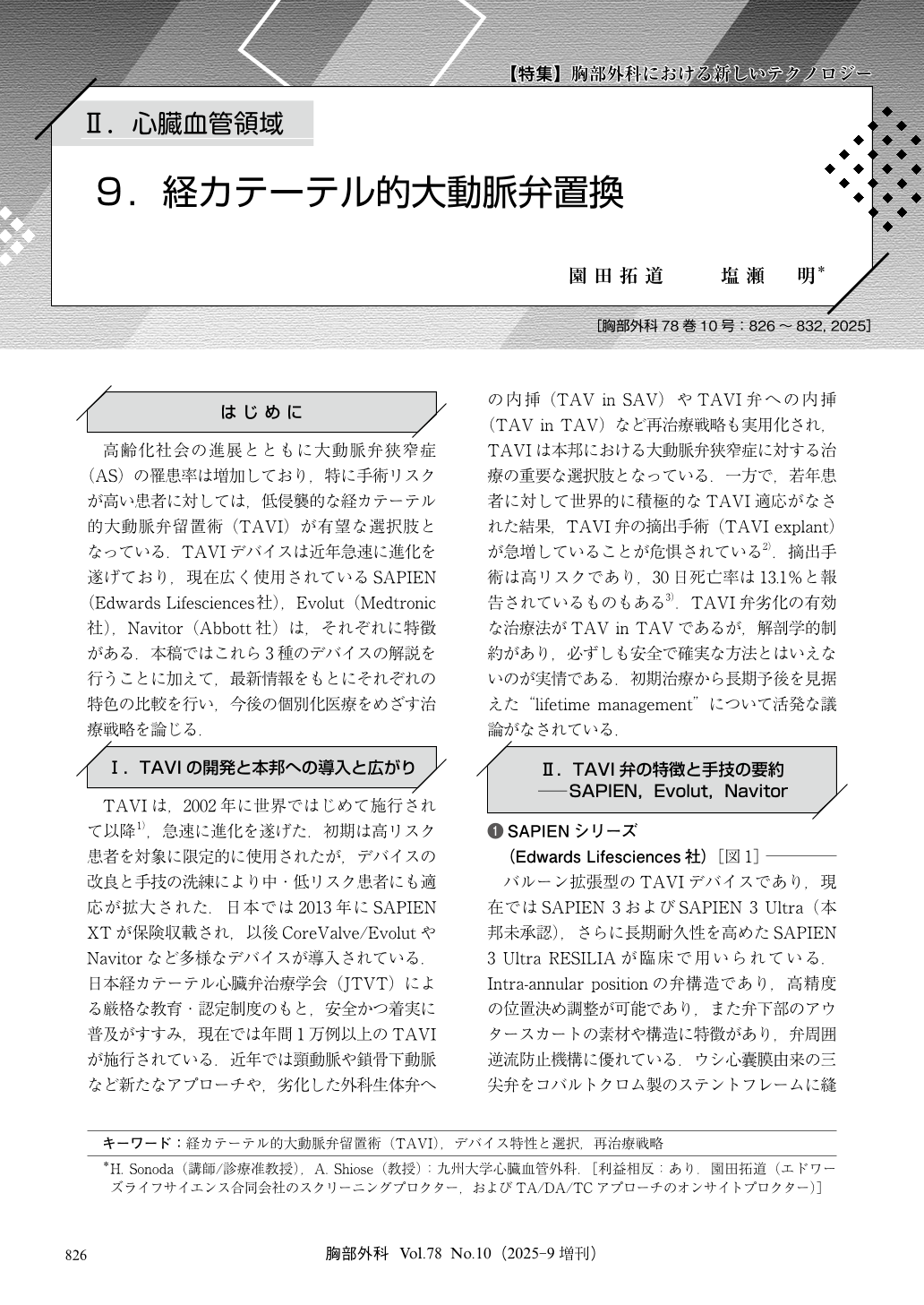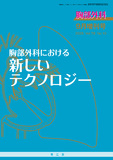Japanese
English
- 有料閲覧
- Abstract 文献概要
- 1ページ目 Look Inside
- 参考文献 Reference
高齢化社会の進展とともに大動脈弁狭窄症(AS)の罹患率は増加しており,特に手術リスクが高い患者に対しては,低侵襲的な経カテーテル的大動脈弁留置術(TAVI)が有望な選択肢となっている.TAVIデバイスは近年急速に進化を遂げており,現在広く使用されているSAPIEN(Edwards Lifesciences社),Evolut(Medtronic社),Navitor(Abbott社)は,それぞれに特徴がある.本稿ではこれら3種のデバイスの解説を行うことに加えて,最新情報をもとにそれぞれの特色の比較を行い,今後の個別化医療をめざす治療戦略を論じる.
With the aging population, the prevalence of aortic stenosis (AS) is increasing, and transcatheter aortic valve implantation (TAVI) has become a promising treatment, particularly for high-risk patients. Over the past decade, TAVI technology has advanced rapidly, and three major devices―SAPIEN (balloon-expandable), Evolut (self-expanding), and Navitor (self-expanding)―are now widely used in Japan. Each device offers unique structural and procedural characteristics:SAPIEN provides precise positioning and strong anti-paravalvular leak features;Evolut offers excellent hemodynamics, especially in small annuli;and Navitor features a flexible delivery system and enhanced sealing via NaviSeal. Long-term data show favorable outcomes for all devices, though each has distinct advantages and limitations. Recent concerns include the management of younger patients and the rise in TAVI explant procedures. Thus, selecting the optimal device based on patient anatomy, risk profile, and future reintervention potential is increasingly emphasized. This review summarizes the key features and clinical outcomes of these devices and discusses future directions toward personalized treatment strategies, including lifetime management approaches. As TAVI expands to lower-risk and younger populations, balancing durability, procedural safety, and reintervention strategies will be essential to ensuring long-term clinical success.

© Nankodo Co., Ltd., 2025


